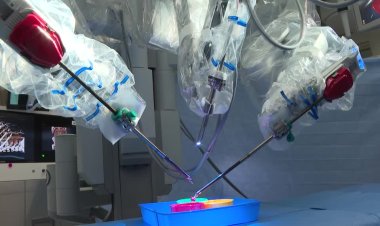Prada and Axiom unveil Artemis III spacesuit design

Italian luxury brand Prada and Houston-based space technology firm Axiom Space, unveiled the design of the Axiom Extravehicular Mobility Unit (AxEMU) spacesuit that will be worn by astronauts during NASA's Artemis III mission, scheduled for 2026.
The AxEMU, presented at the International Astronautical Congress in Milan, was developed through a collaboration between the two companies, blending advanced engineering with aesthetic innovation to meet the challenges of the lunar south pole's harsh environment.
According to the joint statement, the suit is designed to endure extreme temperatures and function in the moon’s permanently shaded regions for up to two hours.
“We are pioneering a new era in space exploration where partnerships are imperative to the commercialization of space,” said Russell Ralston, Executive Vice President of Extravehicular Activity, Axiom Space. “Partnerships build a strong, cohesive team, enabling industry experts to provide cutting-edge technology, specialized products and services to drive innovation. For the first time, we are leveraging expertise in other industries to craft a better solution for space.”
The outer layer of the suit, specifically designed for lunar conditions, will reflect heat and protect astronauts from lunar dust, replacing the dark cover used during initial tests to conceal proprietary technology.
The suit is equipped with specialized tools to improve flexibility, safety, and performance during spacewalks, which will last up to eight hours.
The AxEMU is built to accommodate a diverse range of crew members, supporting individuals from the 1st to the 99th percentile of anthropomorphic sizing.
Extensive testing has been conducted at NASA’s Neutral Buoyancy Laboratory (NBL) and Johnson Space Center, as well as Axiom Space and SpaceX facilities, to simulate lunar conditions.
The spacesuit will undergo further tests in preparation for NASA’s upcoming lunar mission, with the critical design review expected in 2025.















